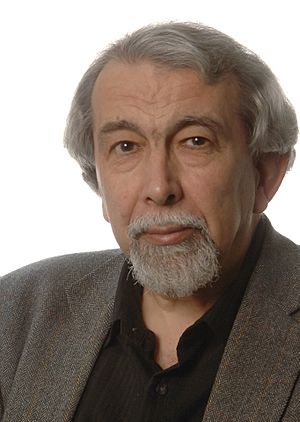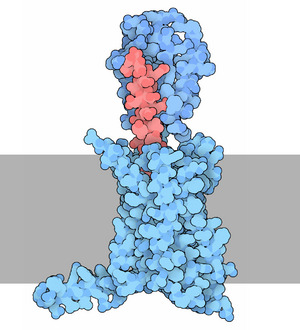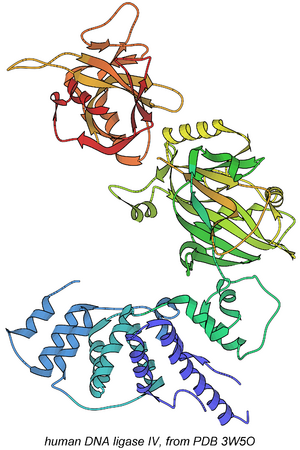Tom Blundell facts for kids
Quick facts for kids
Sir Tom Blundell
FRS FRSC FMedSci FRSB MAE
|
|
|---|---|

Blundell in 2006
|
|
| Born |
Thomas Leon Blundell
7 July 1942 Brighton, England, UK
|
| Education | Steyning Grammar School |
| Alma mater | University of Oxford (BA, DPhil) |
| Known for |
|
| Spouse(s) |
Lady Bancinyane Lynn Sibanda
(m. 1987) |
| Children | 3 |
| Awards |
|
| Scientific career | |
| Fields |
|
| Institutions |
|
| Thesis | The determination by X-ray diffraction methods of the crystal and molecular structures of some co-ordination compounds (1969) |
| Doctoral advisor | Herbert M Powell |
| Doctoral students |
|
Sir Thomas Leon Blundell (born 7 July 1942) is a British scientist. He specializes in biochemistry, which is the study of chemical processes in living things. He also works in structural biology, which looks at the shapes of tiny parts of cells. Sir Tom is also a science administrator, meaning he helps manage scientific research.
In 1969, he was part of a team led by Dorothy Hodgkin. They were the first to figure out the structure of insulin, a very important hormone. Insulin helps your body use sugar for energy. Sir Tom has done a lot of work on how hormones and other body signals work. This research is important for understanding diseases like cancer and tuberculosis. He also helped create computer programs to study proteins. These programs have led to new ways of designing medicines. In 1999, he helped start a company called Astex Therapeutics. This company has developed many drugs that are now being tested. Sir Tom has also played a big role in organizing science research in Britain. He helped make science a more professional field.
Contents
Early Life and Education
Sir Tom Blundell was born in Brighton, England, in 1942. He went to Steyning Grammar School. He was the first person in his family to go to university. He won a special scholarship to the University of Oxford.
In 1964, he earned a top degree in Natural Sciences. After that, he started research in crystallography, which is the study of crystals. He worked with Herbert Marcus Powell for his PhD degree. Later, he joined the famous scientist Dorothy Hodgkin to study insulin. He was also a Junior Research Fellow at Linacre College, Oxford. Today, he is an Honorary Fellow there.
Career and Research Work
Sir Tom Blundell started his career at the University of Oxford and the University of Sussex. In 1976, he joined the Department of Crystallography at Birkbeck, University of London. He became the head of that department in 1978.
In 1991, he started working more in science management and policy. He became the Director General of the Agricultural and Food Research Council. Then, from 1994 to 1996, he was the first Chief Executive of the Biotechnology and Biological Sciences Research Council (BBSRC). He also served as president of the Biosciences Federation from 2004 to 2006. In June 2011, he became the President of the UK Science Council.
In 1995, he became the fifth Sir William Dunn Professor of Biochemistry at the University of Cambridge. He also leads the School of Biological Sciences at that university. He is a fellow of Sidney Sussex College, Cambridge. His main area of study is molecular biology. His research helps identify the chemical processes that cause diseases. This work has led to new medicines for conditions like AIDS, cancer, cataracts, and diabetes. He also helped start two companies that discover new drugs: Astex Technology Ltd and Biofabrika.
Sir Tom has also been involved in environmental issues. From 1970 to 1973, he chaired the Planning Committee of the Oxford City Council. During that time, they stopped a motorway from being built through the city. They also made parts of the historic city center car-free. From 1998 to 2005, he chaired the Royal Commission on Environmental Pollution. In this role, he oversaw important reports on topics like climate change and chemicals in products. He is also a respected member of Humanists UK.
Understanding Diseases and Developing Drugs
Sir Tom Blundell's research focuses on understanding the structure and function of large molecules in the body. He uses methods from biochemistry, protein crystallography (studying protein crystals), and bioinformatics (using computers to understand biological data). His goal is to understand how biological systems work. He also aims to predict protein structures and discover new medicines for cancer and tuberculosis.
His team has studied many important systems. These include DNA repair, hormones, and how cells send signals. They have also looked at proteins in the eye lens and those involved in HIV. He has added 235 crystal structures to the worldwide Protein Data Bank. This is a huge collection of protein structures. His lab has also created several widely used computer programs for bioinformatics. He co-wrote a textbook on protein crystallography with Louise Johnson. This book was translated into French and Russian.
Students and Researchers
Sir Tom Blundell has guided many students who were working on their PhDs. He has also mentored many postdoctoral researchers in his lab. Some of his notable students include Tim Hubbard, Laurence Pearl, Andrej Šali, and Charlotte Deane.
Awards and Recognition
Sir Tom Blundell was chosen as a Fellow of the Royal Society (FRS) in 1984. This is a very high honor for scientists in the UK. He was recognized for his important work on the structures of protein hormones and enzymes. His role in figuring out the insulin crystal structure was especially noted.
He became one of the first fellows of the Academy of Medical Sciences in 1998. He was also elected a member of the European Molecular Biology Organisation (EMBO) in 1985. In 1993, he became a member of the Academia Europaea. He is also a founding member of the Academy of Medical Sciences since 1999. He has received international recognition as a Foreign Member of the Indian National Science Academy, the Chilean Academy, and The World Academy of Sciences (TWAS).
Sir Tom has received many awards and medals. These include the Alcon Award for Vision Research in 1986 and the Krebs Medal in 1987. He also received the Pfizer European Prize for Innovation in 1998. In 2017, he received the 11th IUCr Ewald Prize. He has been president of several important scientific organizations. These include the UK Biosciences Federation (2003–2009) and the Biochemical Society (2009–2011). He has been President of the UK Science Council since 2011.
His important contributions were recognized when he was made a knight in 1997. This means he is now called "Sir Tom." He has also received honorary doctorate degrees from 16 different universities. In 2007, he was interviewed on the BBC Radio 4 program Desert Island Discs.
Personal Life
Sir Tom Blundell married Lady Bancinyane Lynn Sibanda in 1987. They have three children. His brother, Richard Blundell, is a well-known economist.






